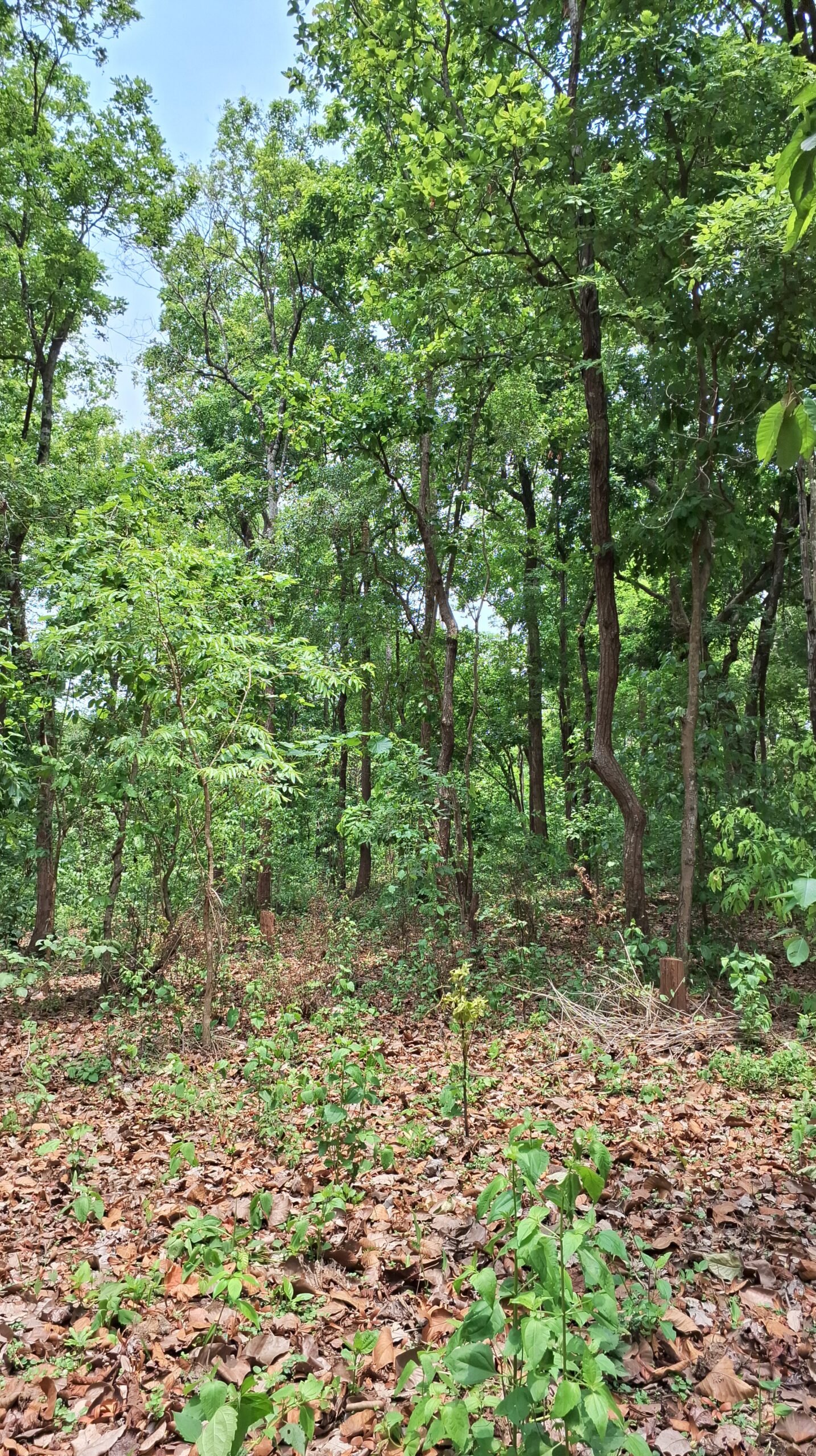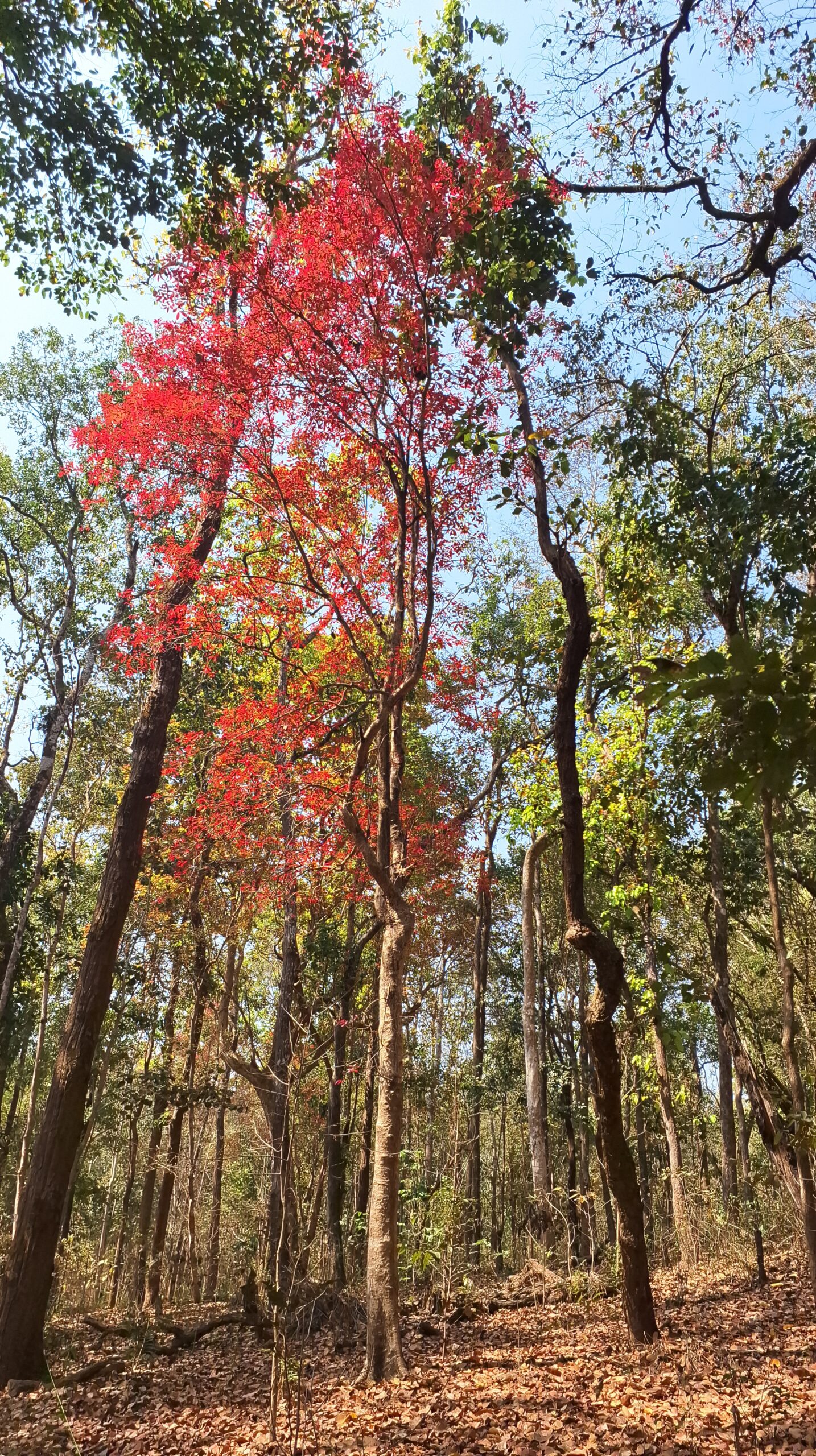After spending months in the forests of Bastar, Chhattisgarh, I have keenly observed the ever-evolving beauty of its forests. Every passing month brings about remarkable transformations, and these changes have captivated my senses in ways I never imagined. I discovered that the forest was not just a collection of trees and plants. It was a living constantly evolving and transforming entity.

One fine day, in a village, the locals offered me a fruit, calling it ‘natural candy’. These tiny circular fruits, when slightly pressed, popped out with a juicy, tangy flavour. I collected some from a tree, noticing how they blended seamlessly with the green leaves. Amidst the green, I spotted a tiny red leaf, an odd but striking presence in the lush green foliage.

It was the month of February, and as the wind carried the faint scent of Mahua flowers and mango blossoms, I noticed most of the trees transitioning from shades of green to yellow. As the months passed and the wind started to lose its moisture, I observed almost all the tree leaves gradually fading into pale yellow. It was almost a magical transformation as if the tree was slowly shedding its attire in preparation for something new. Then, even with a gentle stroke of the winds, the leaves would cascade down, leaving the branches bare. As I gaze upon the naked stems standing tall, with their unique patterns seem just so beautiful. While the leaves continue to fall. The forest floor, now filled with fallen leaves yellows and browns, crunched underfoot, adding a melody to the visual spectacle.
Amidst these transformations, I noticed a tree with a redness at the tips of its branches. It was the same tree of natural candy local called Kusum (Schleichera oleosa). Their tiny baby leaves grew brighter and brighter red each day, standing out amidst the greens, yellows, and browns. Within a few days, the red leaves turned crimson, then orangish, and finally greenish. It seemed as if each day, someone was adding a light layer of green to the leaves. Each day was a new burst of colour. This transition from red to green was nothing short of spectacular and, in a very strange way reminds me of the mesmerising auroras of the Northern Pole.

The green pigmentation which was slowly changing the colour of the leaves now starts to cover the whole tree. Slowly and gradually, the crown of the tree turns greener and greener pushing the redness towards the tip of the stem. It was as if it was a slow dance of colours, a daily metamorphosis that held me in awe. While all this colourful drama was going on, a very tiny little bud of flower started showing up getting ready to peep into the world. Many soft long elongated stems with multiple tiny flowers grow in the protection of the new leaves.

Within a month, the tree blended in with the other green trees around, but one could always expect to find that one tiny odd red leaf on that juicy fruit tree. Each season brought its own unique beauty, painting the forest with a fresh palette of colours and textures.
All photos by Shruti Samanta.
About the author: Shruti Samanta is a PhD student at ATREE (Ashoka Trust For Research In Ecology And The Environment), Bangalore, studying Sal Forest of Bastar, Chhattisgarh. She loves watching and learning more and more about these ever-changing deciduous forests.





